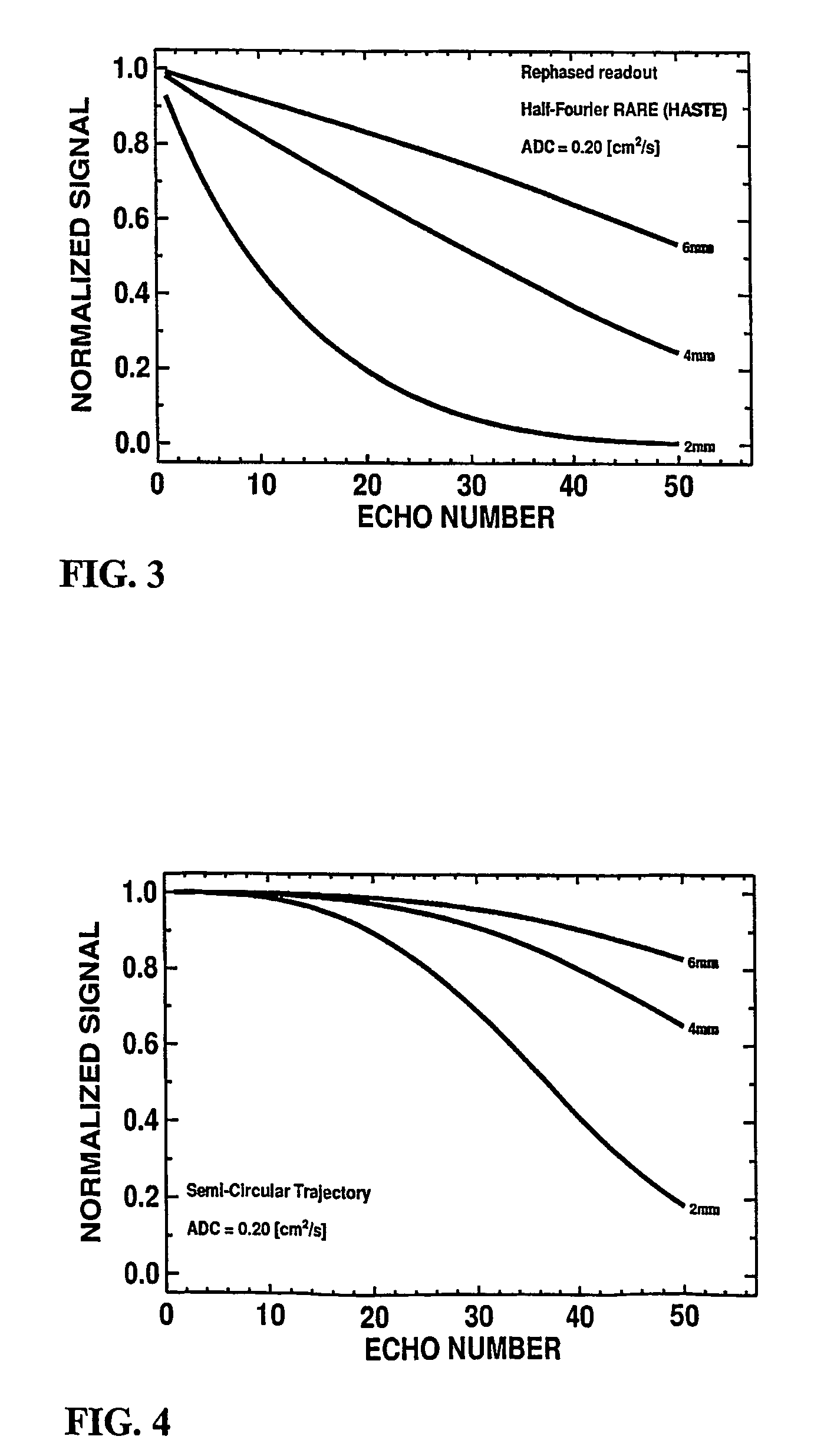Method and system for rapid magnetic resonance imaging of gases with reduced diffusion-induced signal loss
a technology of magnetic resonance imaging and gas, applied in the field of magnetic resonance imaging, can solve the problems of limited application of these established techniques for rapid, high-snr hyperpolarized gas imaging, signal attenuation increase, and spatial resolution limitation
- Summary
- Abstract
- Description
- Claims
- Application Information
AI Technical Summary
Benefits of technology
Problems solved by technology
Method used
Image
Examples
examples
[0075]Practice of the invention will be still more fully understood from the following examples, which are presented herein for illustration only and should not be construed as limiting the invention in any way. The results from theoretical calculations and experimental measurements are presented below to provide examples of how the pulse-sequence design methods listed above serve to yield pulse sequences with reduced diffusion-induced signal attenuation compared to conventional pulse sequences currently employed for gas imaging. The theoretical results are from computer-based numerical simulations of the magnetization during a pulse sequence and are based on the well-established Bloch equation relationships and relevant extensions, and the relationship [17]:
[0076]b(t)=∫0tk(t′)2ⅆt′[1]
for the b value, which quantifies the degree of diffusion-induced signal attenuation corresponding to a specific path through k space, where k(t) is the time-dependent position in k space as determ...
PUM
 Login to View More
Login to View More Abstract
Description
Claims
Application Information
 Login to View More
Login to View More - R&D
- Intellectual Property
- Life Sciences
- Materials
- Tech Scout
- Unparalleled Data Quality
- Higher Quality Content
- 60% Fewer Hallucinations
Browse by: Latest US Patents, China's latest patents, Technical Efficacy Thesaurus, Application Domain, Technology Topic, Popular Technical Reports.
© 2025 PatSnap. All rights reserved.Legal|Privacy policy|Modern Slavery Act Transparency Statement|Sitemap|About US| Contact US: help@patsnap.com



